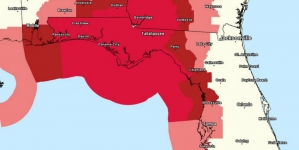-
Tips for becoming a good boxer - November 6, 2020
-
7 expert tips for making your hens night a memorable one - November 6, 2020
-
5 reasons to host your Christmas party on a cruise boat - November 6, 2020
-
What to do when you’re charged with a crime - November 6, 2020
-
Should you get one or multiple dogs? Here’s all you need to know - November 3, 2020
-
A Guide: How to Build Your Very Own Magic Mirror - February 14, 2019
-
Our Top Inspirational Baseball Stars - November 24, 2018
-
Five Tech Tools That Will Help You Turn Your Blog into a Business - November 24, 2018
-
How to Indulge on Vacation without Expanding Your Waist - November 9, 2018
-
5 Strategies for Businesses to Appeal to Today’s Increasingly Mobile-Crazed Customers - November 9, 2018
This 1-minute visualization on space junk reveals a serious problem
As the video above shows, since the Soviet Union first launched Sputnik in 1957, an excess of debris has piled up around Earth.
Advertisement
If space debris orbits low enough to re-enters the Earth’s atmosphere they rarely cause any harm.
Stuart Grey, a scientist and lecturer at the University College London visualized what the thousands of debris orbiting around Earth would look like if we could see each and every one of them.
The video above was created by Stuart Grey, using data on the precise location of each piece of space junk from space-track.org. Every white dot in the video represents space debris released during space missions. As for debris ranging from 0.4 to 4 inches in diameter, there are approximately 500,000 pieces of debris. The U.S. Space Surveillance Network tracks anything larger than 10 centimeters.
With this in mind, astronauts have begun moving out of near Earth orbit and using orbits further and further from Earth.
Even tiny paint flecks can damage a spacecraft when traveling at these velocities.
According to American Space Agency NASA, it now tracks 20,000 such pieces, mostly from used rocket parts, non-functional satellites, and other objects that are measured to be larger than a softball.
NASA takes the threat of collisions with space debris seriously and has a long-standing set of guidelines on how to deal with each potential collision threat.
The worst case scenario was illustrated in the Hollywood blockbuster Gravity, in which the spacecraft George Clooney and Sandra Bullock are aboard is torn to shreds after debris from an exploded satellite rips through their ship.
The objects in the visualization aren’t to scale, but are all larger than an apple, “that is, an apple capable of ripping through a steel wall at 17,000 miles per hour”, Bohannon writes. Nicholas Johnson, NASA chief scientist for orbital debris said in a statement. However, in 2007 a Chinese missile test created over 2,000 new pieces of debris, and in 2009 two satellites collided, creating yet another 2,000 new pieces.
Another 20 years later, in 2000, the number of tracked debris stabilized at about 9,000 objects.
Without bringing into question the fact that we are littering space, we are also self-sabotaging in a way. To draw attention to the trash problem, scientists have created a new visualization of the debris.
Advertisement
The Smithsonian Mag notes that, The visualization jettisons along through the history of space junk since Sputnik’s launch.




























